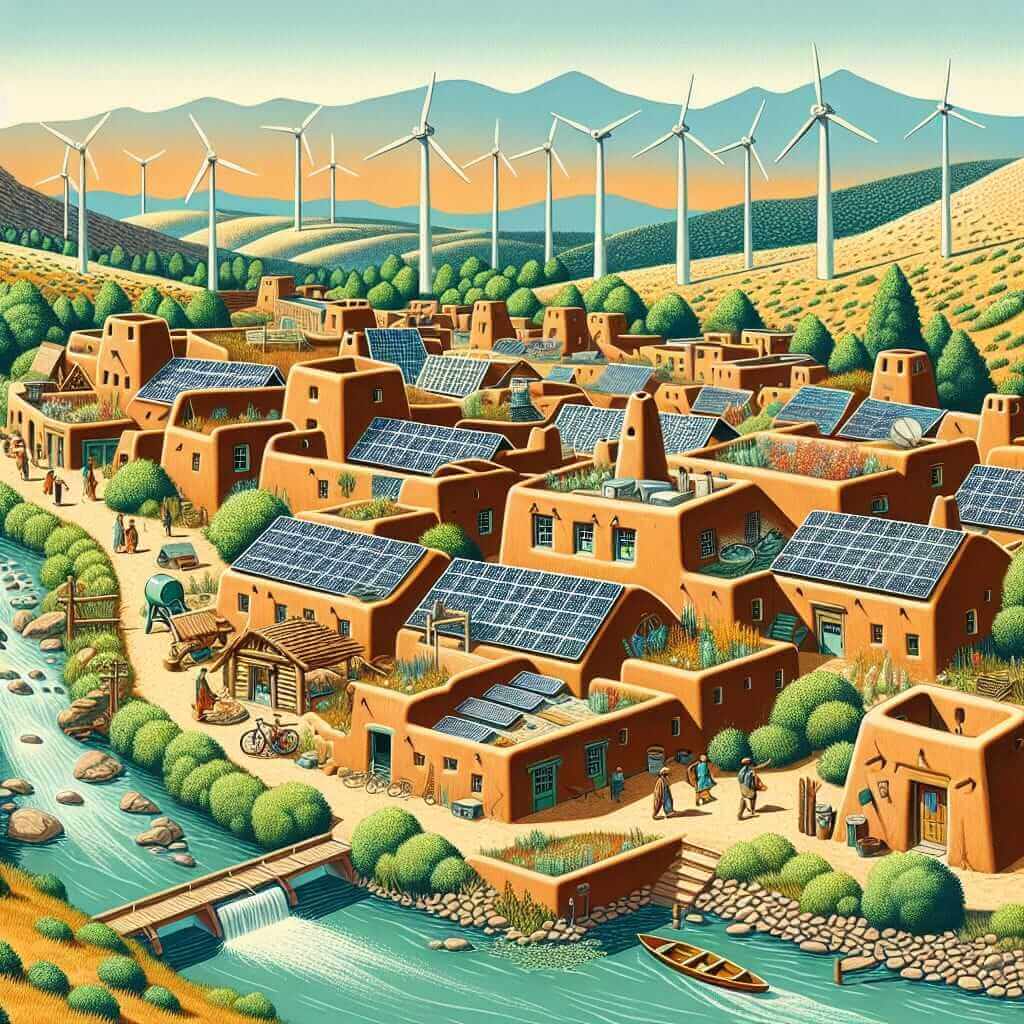The IELTS Reading test is designed to evaluate a wide range of reading skills, including your ability to read for gist, read for main ideas, read for detail, understand inferences and implied meaning, recognize a writer’s opinions, attitudes, and purpose, and follow the development of an argument. One popular topic that has appeared in past IELTS Reading exams is renewable energy and its impact on developing countries. This topic is highly relevant given the global shift toward sustainable energy and the ongoing challenges faced by developing nations.
In this article, we will create a sample IELTS Reading passage based on the topic “How is Renewable Energy Being Used to Power Developing Countries?” along with related questions and answers. This practice will not only help you get familiar with the type of content you may encounter in the actual exam but also enhance your understanding of this critical global issue.
Sample Reading Passage
Renewable Energy: A Catalyst for Development
In recent years, renewable energy has emerged as a vital tool for fostering development in many developing countries. Renewable energies such as solar, wind, and hydroelectric power offer sustainable and environmentally friendly alternatives to fossil fuels. For developing countries, renewable energy is more than just a green solution; it is a catalyst for economic growth, social development, and improved quality of life.
One notable example is Kenya, where solar energy has transformed rural areas that previously had no access to electricity. Community-based solar projects have provided electricity for lighting, refrigeration, and mobile phone charging, significantly enhancing the quality of life for residents. Schools and health clinics now can operate efficiently, contributing to better education and healthcare services.
Similarly, in Bangladesh, solar home systems have been installed in millions of households, providing reliable electricity to areas that the national grid does not reach. These systems have not only improved living conditions but have also created jobs and opened new economic opportunities.
Another compelling example is Brazil, where hydroelectric power accounts for a significant portion of the country’s energy mix. Hydroelectric projects have not only provided a steady supply of electricity but have also driven infrastructure development and rural electrification.
Despite these successes, the transition to renewable energy in developing countries is not without challenges. High initial costs, lack of technical expertise, and inadequate infrastructure are significant barriers. However, international partnerships, financial aid, and innovative financing models are helping to overcome these obstacles. For instance, microfinance initiatives are enabling small communities to invest in renewable energy projects, spreading the benefits more broadly.
In conclusion, renewable energy offers a pathway to a more sustainable and prosperous future for developing countries. While challenges remain, the ongoing efforts and investments in renewable energy signify a bright outlook for these nations.

Sample Reading Questions
Questions 1-3: Multiple Choice
Choose the correct letter, A, B, C, or D.
-
What is one benefit of solar energy projects in rural Kenya?
- A. They provide electricity for schools and health clinics.
- B. They reduce the cost of living.
- C. They eliminate the need for fossil fuels.
- D. They stop urban migration.
-
How have solar home systems impacted Bangladesh?
- A. By reducing the national grid’s efficiency.
- B. By lowering the cost of electricity.
- C. By creating jobs and new economic opportunities.
- D. By increasing reliance on fossil fuels.
-
What is a major source of renewable energy in Brazil?
- A. Wind power
- B. Solar power
- C. Hydroelectric power
- D. Biomass energy
Questions 4-8: True/False/Not Given
Do the following statements agree with the information given in the reading passage?
-
Renewable energy is solely an environmental solution.
- True
- False
- Not Given
-
Kenya has used solar energy to improve healthcare services.
- True
- False
- Not Given
-
The national grid in Bangladesh covers all areas of the country.
- True
- False
- Not Given
-
Hydro power has contributed to Brazil’s infrastructure development.
- True
- False
- Not Given
-
Microfinance initiatives have hindered the adoption of renewable energy.
- True
- False
- Not Given
Answer Key
- A. They provide electricity for schools and health clinics.
- C. By creating jobs and new economic opportunities.
- C. Hydroelectric power
- False
- True
- False
- True
- False
Common Mistakes
When tackling Reading sections like these, some common mistakes can be:
- Misunderstanding the questions: Ensure you clearly understand what each question is asking. Look for keywords.
- Time management: Spend too much time on difficult questions and not enough on ones you can answer quickly.
- Overlooking contextual clues: Make sure to use all contextual information available.
Vocabulary
- Catalyst (n.): A person or thing that precipitates an event. /ˈkæt·ə·lɪst/
- Fostering (v.): Encourage the development of something. /ˈfɒs.tər.ɪŋ/
- Infrastructure (n.): The basic physical systems and structures needed for the operation of a society. /ˈɪn.frəˌstrʌk.tʃər/
Grammar Tips
- Complex Sentences:
- Definition: A sentence containing a subordinate clause or clauses.
- Formula: Main Clause + Subordinate Clause
- Example: Despite these successes, the transition to renewable energy in developing countries is not without challenges.
Recommendations
To excel in the IELTS Reading test:
- Practice consistently: Regular reading practice will enhance your speed and comprehension.
- Expand your vocabulary: Familiarize yourself with a broad range of vocabulary related to various topics.
- Simulate test conditions: Take practice tests under timed conditions to get used to the pressure.
By focusing on these strategies, you can improve your performance and achieve a higher score on the IELTS Reading test.